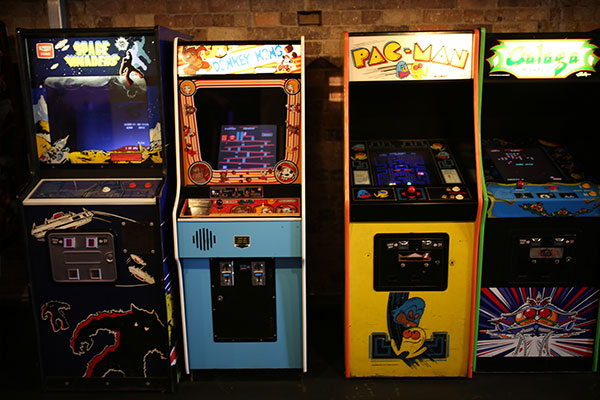the retro arcade hobby
Early video games, emerging in the 1950s and 1960s, laid the foundation for the digital entertainment revolution. Simple in design and often played on mainframe computers, titles like "Tennis for Two" and "Pong" introduced interactive gameplay that captivated players. The 1970s saw the birth of arcade games, with "Space Invaders" and "Pac-Man" becoming cultural phenomena, driving the arcade boom. Home consoles began to gain popularity, with systems like the Atari 2600 making gaming accessible to a wider audience. These formative years shaped the industry's evolution, showcasing innovation in graphics, sound, and gameplay mechanics, and establishing a vibrant community of gamers that would only grow over the decades.

The Origins of Fun: How Early Arcade Machines Shaped Today's Retro Culture
The sound of pixelated explosions, the flashing lights of vibrant screens, and the tantalizing promise of high scores—these elements are woven into the fabric of gaming history. Early arcade machines laid the groundwork for what we now consider retro culture, influencing not only gaming but also music, art, and even fashion. Let’s take a closer look at these iconic machines and their lasting impact on our collective nostalgia.
The Birth of Arcade Gaming
In the early 1970s, the gaming landscape was forever altered by the introduction of arcade machines. Titles like Pong (1972) and Space Invaders (1978) ushered in a new era of entertainment, offering players the chance to compete for high scores in public spaces. These machines were more than just games; they were social hubs where players gathered, cheered each other on, and forged friendships over shared experiences.
The Aesthetic Appeal
The design of early arcade machines contributed significantly to their allure. Bright colors, bold graphics, and intricate cabinet artwork drew players in from afar. The iconic joystick and button layout became synonymous with gaming, creating an instantly recognizable format. This visual language has been revived in modern indie games and retro-themed merchandise, tapping into the aesthetic that defined an era.
Soundtracks of a Generation
The audio experiences of these early games were as captivating as their visuals. The catchy chiptune melodies and sound effects became part of the cultural zeitgeist. Artists today often draw inspiration from these sounds, incorporating 8-bit music into their tracks, and creating a bridge between past and present. The revival of retro music styles further cements the significance of arcade culture in today’s artistic expressions.
Cultural Impact and Legacy
Arcade games were a driving force in the evolution of video game culture. They inspired a wave of home console development in the late 70s and early 80s, leading to iconic systems like the Atari 2600 and the Nintendo Entertainment System (NES). This transition also spurred a boom in game design, creating a diverse landscape of genres and gameplay styles that continue to thrive.
As gaming became more mainstream, the nostalgia for those early days grew stronger. The rise of retro gaming events, museums, and even arcade bars speaks to a longing for the simplicity and communal experiences that characterized the arcade era. Platforms like Twitch and YouTube also showcase gameplay from classic titles, allowing new generations to experience the magic firsthand.
A New Wave of Retro
Today, retro culture is experiencing a renaissance. Modern game developers are deliberately incorporating retro aesthetics and mechanics into their creations. Titles like Cuphead and Stardew Valley celebrate the simplicity and charm of earlier games while appealing to contemporary gamers. Meanwhile, merchandise inspired by classic arcade titles—such as clothing, collectibles, and art—continues to flood the market.
Conclusion
Early arcade machines were more than just entertainment devices; they were cultural touchstones that shaped a generation. Their influence permeates various aspects of modern life, from music to fashion to the games we play today. As we reminisce about those brightly lit rooms filled with the sounds of competition, we celebrate not just the games themselves, but the enduring spirit of community and creativity they fostered. In a world increasingly dominated by digital interaction, the nostalgia for those arcade experiences serves as a reminder of the joy found in simple, shared moments.
and thats how it all began